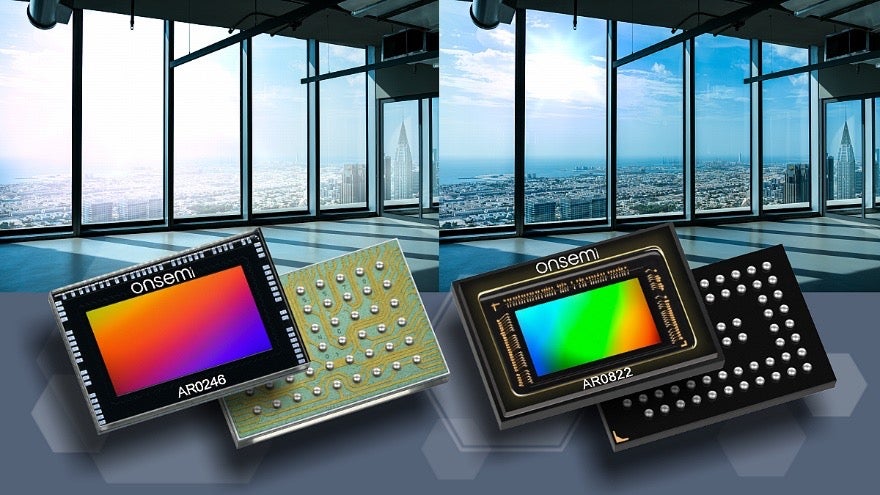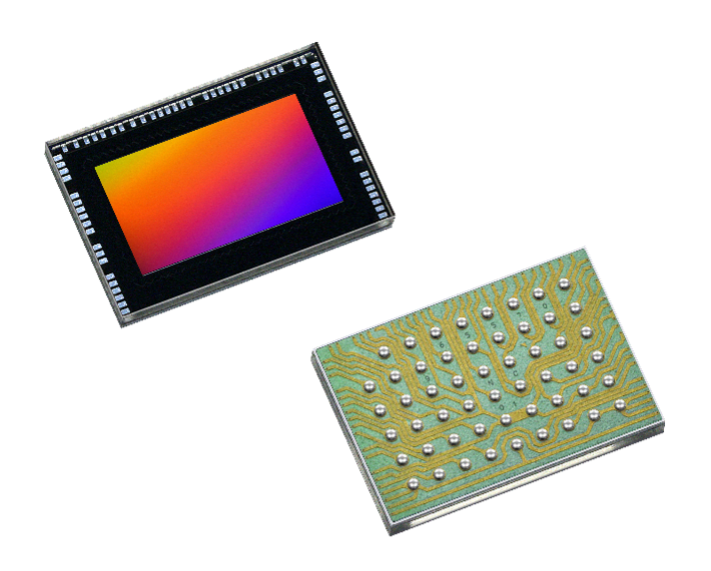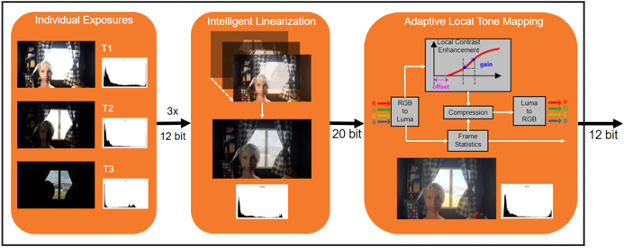Accurate image depth and detail is essential in security cameras, facial recognition devices and machine vision devices to deliver a more impactful and high-fidelity viewing experience. In order to achieve image depth and detail, certain image sensor features are necessary for applications; one feature that’s important is Adaptative Local Tone Mapping
onsemi has recently released the AR0246, which is part of the Hyperlux LH image sensor family. This image sensor is a 2 MP 1/4−inch Back-Side Illuminated (BSI) Stacked CMOS digital image sensor with a 1920 x 1080 active−pixel array. This advanced sensor captures images in either linear, enhanced Dynamic Range (eDR) or embedded High Dynamic Range (eHDR with 120dB) modes, with a rolling−shutter readout. It also includes a feature known as adaptive local tone mapping (ALTM), which packs high dynamic range images in reduced bit depth to be used on non- high dynamic range (HDR) processors or display devices which have reduced bit depth. In this blog, you will get to know ALTM function and its benefits.
What Is Adaptive Local Tone Mapping (ALTM)
Adaptive Local Tone Mapping (ALTM) is an important technique in the field of High Dynamic Range (HDR) imaging. It is designed to process HDR images, which contain a wider range of luminance levels than can be captured by conventional digital cameras. Its aim is to simulate the human visual system’s response to light and contrast. This feature combines global and local adaptation to achieve tone mapping, ensuring that the mapped image retains the original contrast relationships while enhancing its overall appearance. ALTM enhances HDR images while maintaining its naturalness and preserving details. HDR is a significantly important feature for almost all applications with a camera, such security and surveillance, carDVR, facial recognition. Design engineers will need ALTM to get the best image quality in their products. ALTM, enables 12-bit linear ISPs (not HDR enhanced) to process 120 dB images and videos.
Benefits of ALTM within the AR0246
The AR0246 implements ALTM in the Bayer domain. The advantage of doing tone mapping on the Bayer domain is that common 10−bit or 12−bit pipelines may be used for the HDR image rendering. TheAR0246 provides benefits for low-end ISP, which include:
- Enabling 12-bit linear ISPs (not HDR enhanced) to process 120dB images and videos.
- The image details are preserved as the bit depth is reduced from 20 bits to 12 bits.
- The RGB color ratios are preserved so standard linear processing can be applied.
The AR0246 can also achieve the following computation on chip to transmit low bandwidth embedded HDR:
- Capture multiple exposures (up to 3) of 12-bit data each.
- Merge multiple exposures to create 20-bit merged image.
- Perform adaptive local tone mapping (ALTM) on the merged image to output 12-bit image retaining the high dynamic range of the sensor output.
Due to the features above, the SoC/ISP can process the HDR image with reduced processing bit-depth and thus also get higher frame rate.
Overall, ALTM combines local and global adjustments, reduces artifacts, and ensures detail preservation, making it a valuable technique for improving HDR images. This feature is very valuable in applications like wearable cameras, carDVR, facial recognition and more.
Learn more about the AR0246 image sensor and the Hyperlux LH family.
Additional Resources



